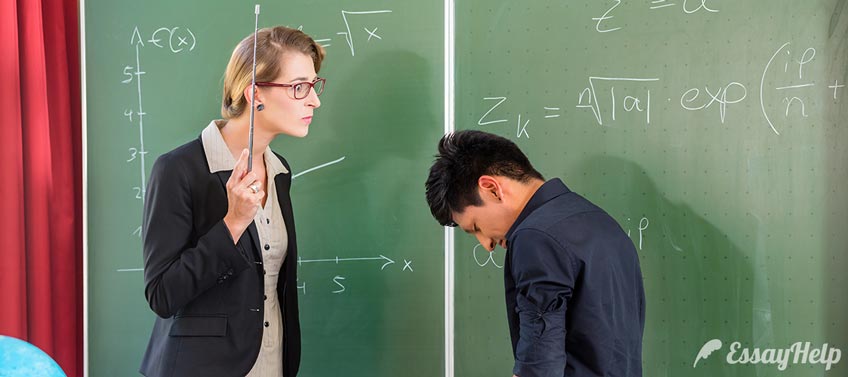The skill of giving a constructive criticism is the pure art which everyone needs to master, because we all meet that need every day: in regular life, or during studies. A person who is not able to criticize others correctly won’t have good relations with other people. So, it does not matter who is the object of your criticism: a close person, a child, a groupmate or a colleague. You need to know how to criticize cleverly.

What is that “Constructive Criticism”?
Constructive criticism is a careful disapproval, criticism or advice. This form of criticism exists to help a person become better and avoid touching his or her self-esteem at the same time. That is a rather friendly attitude, when one’s criticism is not directed onto someone’s personality.
Scientists say that rough criticism causes the negative emotional flow leading to even more mistakes and guilt feeling.
Learn to communicate in a friendly manner and not to lower your collocutor’s self-esteem. There are some techniques for that.
Use the “Sandwich” Technique
It allows neutralizing all the negative consequences of a feedback. Its structure is quite simple:
- Start from mentioning strengths. Every person has them, as well as some achievements.
- Give feedback. Say about things a person needs to improve. Stay calm.
- Close up the dialogue (monologue). Finish a conversation with mentioning advantages a person might get if to listen to your recommendations.
Please notice, that this technique does not allow any negative phrases to appear. You concentrate your collocutor’s attention on their past successes and show what to do in order for them to appear again in future.
Use the Structure of “Clarity, Involvement, and Improvement”
“Sandwich” technique may not fit many situations, so you can use CII structure, too. It is more universal and lets you give feedback for almost every person.
- Start. Start a conversation. Be honest and sincere about the problem that worries you.
- Describe your trouble. Do that as short as you can.
- Share your strategy. Describe how exactly you want to discuss a problem.
- Show up a scheme of the offered process. Insist on points 7 to 12 to be the most important.
- Give feedback. Ask a person if he or she agrees with the structure or you should change something.
- Initiation. The start itself.
- Problem description. Mention things that worry you about the problem.
- Tell about details. General description is useful enough but evil is in details, so point them out.
- Give feedback. Finish your monologue and involve a person into conversation.
- Receive feedback. Listen to other person’s opinion.
- Get the agreement. If the person agreed, discuss his or her further actions in details.
- Tell about improvements. Do not forget to point profits a person is about to get.
- Close up a conversation.
This technique seems to be complicated only when you see its description for the first time. The main thing for you is to know about the point and the process of conversation beforehand, in order to avoid unexpected issues.
Support Correlation: Hope/Dream/Criticism
There are three elements that are to stay in harmony during the constructive criticism conversation. Every person has his or her hopes and dreams. Say that they can get it all if they work on themselves. Any misbalance is this structure will lead a person to become not confident enough or overconfident about his or her possibilities. And nobody knows what is worse in this case.
Find out what motivates a person. This is the first thing to think about.
Get Rid of Unnecessary Criticism
A person can make many mistakes, but you don’t have to mention them all. Tell about main ones. Not every portion of criticism is needed and useful. Do not forget that you recommend actions, not scold a person.

Stay Neutral: Leave Your Emotions Aside
Nobody is safe from being captured by emotions. Even if you though over everything clearly, the other person can answer a bit aggressively. If this fact “hooks” you, a quarrel will come next.
Never let that thing happen. Put your emotions to order before starting a dialogue, and decide how to react in case of collocutor’s aggression beforehand.
